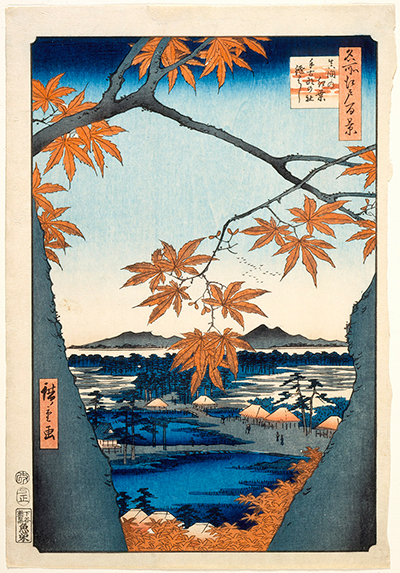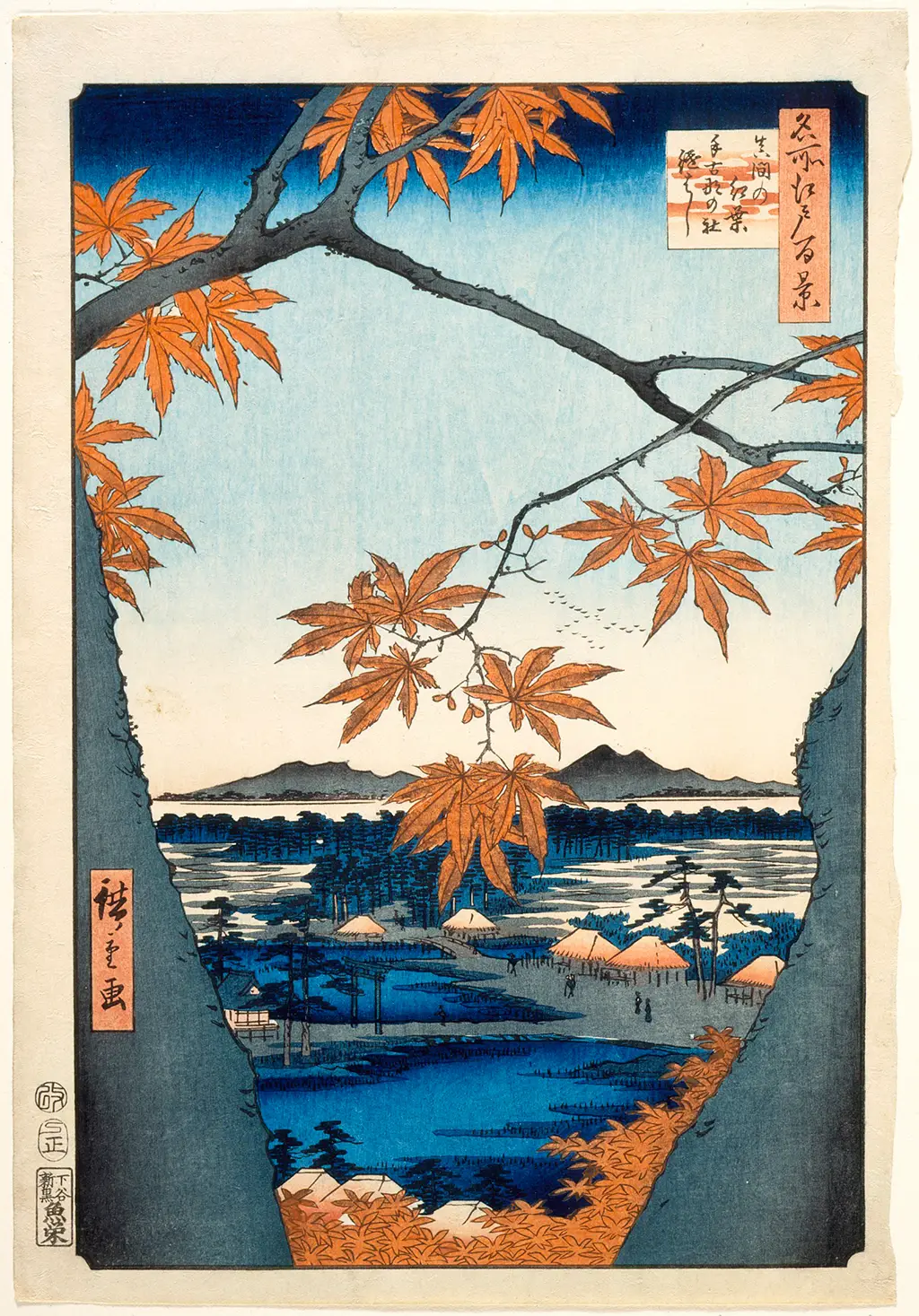This painting from Japanese painter Hiroshige captures a display of beautiful maple leaves which partially cover our view towards rolling hills in the far distance. The artist has successfully transported us to the same position that he would have been sat back in the early 19th century.
Leaves, plants and flowers were a key ingredient of this artist's oevure but were also a critical element of Japanese art more generally. This nation's population have always been well connected to their natural surroundings and that continues today. Many will celebrate the blooming flowers of certain species and spend time together whilst doing so. There were also other artistic themes that would sometimes be censored by the ruling powers within Japan, making this a safer topic with which artists could work without fear of causing controversy. Hiroshige discovered this genre to be his preference after a few years of experimentation and at that point would never look back. Any use of humanity within his paintings from now on would only be within a supporting role, normally as a method of underlining the superior power of nature in comparison.
Japanese woodblock printing had used simplified colour schemes for a number of years before artists started to become a little more ambitious. The likes of Hiroshige would make use of more blocks together in order to widen the palettes and provide a more aesthetically pleasing result. See the example here in front of us, namely Maple Trees at Mama, Tekona Shrine and Linked Bridge, where tones of orange dominate your focus initially, before you spot further colours such as the shades of blue and grey. There are two thick branches that stick out from below, essentially framing the lower half of the composition, and then allowing their leaves to decorate the rest. Detail-wise, there is a long bridge which stretches through the centre of the composition and also rolling mountains in the far distance.





